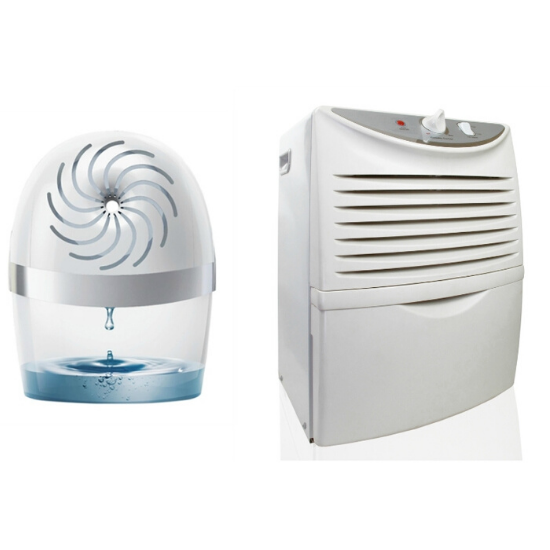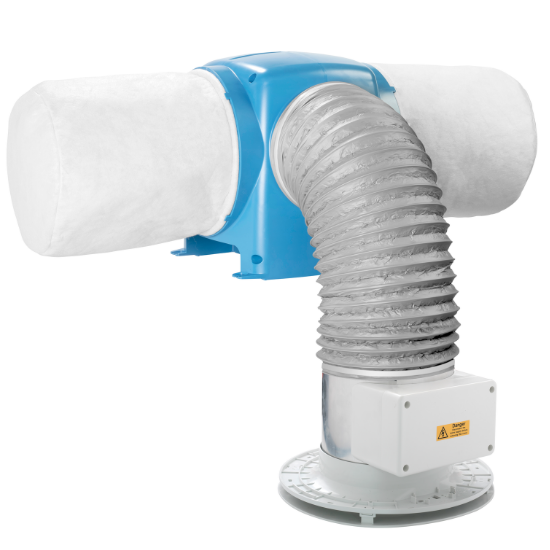
Bogus Damp Cures
You need only spend a few moments surfing the internet to find a whole raft of cheap and cheerful solutions for combatting condensation dampness problems in the home. But many so-called cures are more sticky plaster than magic wand…
Do Dehumidifiers Mask The Problem?
By Sarah Thomas, Residential Sales Engineer, April 2019
Perhaps the most over-sold solution for condensation is the dehumidifier. While dehumidifiers dry out the air in the immediate area, they don’t ventilate it. Ventilation units extract the stale, moisture-laden air within the home, replacing it with clean, fresh air from outside. Instead, dehumidifiers recirculate the same stale air that contains mould spores, dust mite allergens and pollutants present in homes. In addition, the stale water collected by the dehumidifier lays dormant in a water tray until emptied.
Then there is the issue of where to position your dehumidifier. Condensation is produced by cooking, cleaning, washing, bathing and even just breathing. So it’s likely that most of the habitable rooms in the home and probably all of the wet rooms will produce excess moisture at different times during 24 hours. It would be costly and inconvenient to run more than one dehumidifier, and so homeowners resort to moving the unit from room to room or positioning it in hallways and doorways which can be obstructive.
Running a dehumidifier at night can be a noisy business. Even the quietest models are audible at night. Then you have the running costs. At an average price of 5 pence per hour, a mid-range model running at the recommended 15 hours per day would cost approximately £20 per month.

Are Moisture Absorbers Too Good To Be True?
No batteries and no electrical power are needed, and you can see the water collecting day by day. It’s little wonder that the new brands of moisture absorbers are becoming so popular with social landlords and tenants seeking a cheap fix for the problem of streaming windows. Moisture absorbers are tablets that soak up moisture in the air. On average, they last between 1 to 3 months and require regular emptying of the stale water held within the vessel.
Putting moisture absorbers in the rooms with the most visible signs of dampness is only treating the obvious symptoms of condensation dampness. It won’t address the issue of poor indoor air quality caused by excess humidity, and the subsequent problems with airborne allergens that trigger asthma symptoms.
So What Is the Answer?
There is no magic wand required to cure condensation for good. It’s a matter of physics.
To reduce moisture levels and clean the indoor air, an average of four air changes per hour is required. This is a job for whole-house ventilation, which ensures that a property is ventilated throughout, not just in the wet rooms.
By far the most effective solution for existing homes is a simple, low-cost strategy called Positive Input Ventilation, or PIV. This technology, invented by Nuaire 50 years ago, involves drawing fresh air from outside into a unit located in the loft area. The air is then filtered, tempered, and gently pushed into the home via a ceiling diffuser. This process works continuously; forcing out stale, moisture-laden air and drastically reducing both the humidity levels and the airborne allergens. It creates a healthy indoor environment in which condensation cannot exist.

PIV is now the most popular and cost-effective method of whole-house ventilation for existing homes, and one favoured by social housing providers and tenants as it eradicates condensation dampness. Nuaire has recently launched its low-energy Drimaster-Eco range which offers quicker installation, convenient hallway control and a range of wireless sensors to respond to changing humidity and CO2 levels for even better indoor air quality.
Written April 2019
